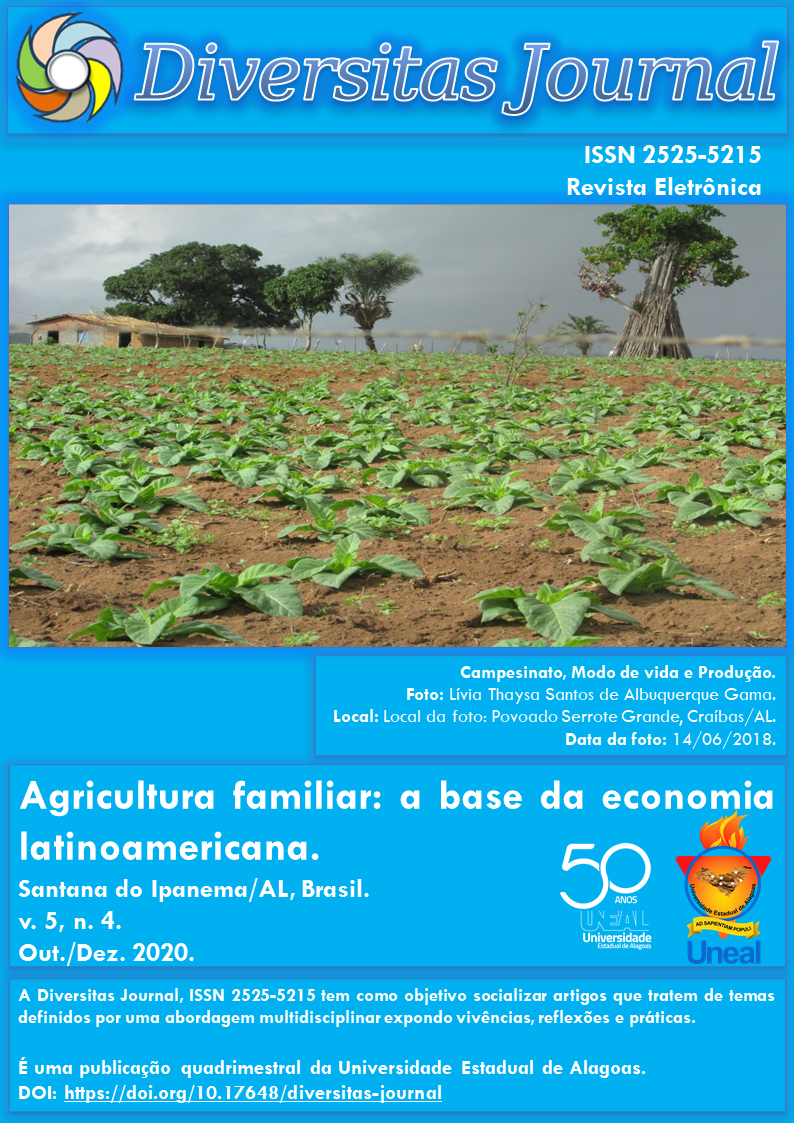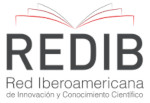Influência do efeito de borda na herbivoria foliar de Ziziphus joazeiro Mart. em Floresta Tropical Sazonal Seca
DOI:
https://doi.org/10.17648/diversitas-journal-v5i4-976Abstract
ABSTRACT: Caatinga is a unique and exclusive biome in Brazil and, despite this, there are few studies that seek to understand the process of herbivory that occurs in plant species, even though this is an element of great importance about ecological relations. Considering the scarce information about the action of the edge effect on the herbivory of the plant species Ziziphus joazeiro Mart. (juazeiro) in Caatinga area, this study aimed to verify if there is influence of the edge effect on the herbivory in juazeiro, considering both the edge and the interior region of a forest fragment. The study was conducted in a Caatinga fragment in the municipality of Igaci-AL, with an experimental area divided into 20 linear transects of 10m², 10 transects in the edge region of the area and another 10 within the studied area. In each transect, 10 leaf limbs were randomly collected, separated in plastic bags and taken for analysis, where they were photographed and analyzed using the Image J software. The data obtained were transformed into √x + 1 and submitted to analysis of variance. The means compared by Tukey test at 5% probability using the SISVAR program. The herbivory rate was also calculated. A total of 34 individuals were found, 17 inside the fragment and 17 at the edge. Although in gross numbers there is a difference in the herbivory level between the edge and the interior, statistically there was no significance, presenting the same herbivory level in both regions. In addition, the herbivory rate averages in edge and inland conditions were not statistically significant either. Regarding the percentage of leaves with herbivory (herbivory rate), they were classified in category 1. Thus, it can be concluded that the edge effect did not influence the herbivory of the species in this Caatinga fragment.
KEYWORDS: semiarid, plant-animal interaction, habitat fragmentation.
Metrics
Downloads
Published
How to Cite
Issue
Section
License
Copyright (c) 2020 Luiz Eduardo Bezerra Silva, Luan Lucas Cardoso Lima, Rafael Lima Vieira da Silva, João Pedro Ferreira Barbosa, Rosineide Nascimento da Silva

This work is licensed under a Creative Commons Attribution 4.0 International License.
The Diversitas Journal expresses that the articles are the sole responsibility of the Authors, who are familiar with Brazilian and international legislation.
Articles are peer-reviewed and care should be taken to warn of the possible incidence of plagiarism. However, plagiarism is an indisputable action by the authors.
The violation of copyright is a crime, provided for in article 184 of the Brazilian Penal Code: “Art. 184 Violating copyright and related rights: Penalty - detention, from 3 (three) months to 1 (one) year, or fine. § 1 If the violation consists of total or partial reproduction, for the purpose of direct or indirect profit, by any means or process, of intellectual work, interpretation, performance or phonogram, without the express authorization of the author, the performer, the producer , as the case may be, or whoever represents them: Penalty - imprisonment, from 2 (two) to 4 (four) years, and a fine. ”


















